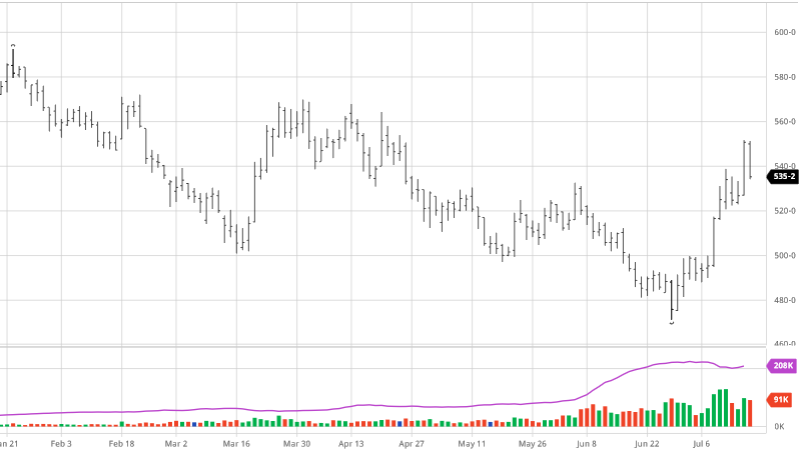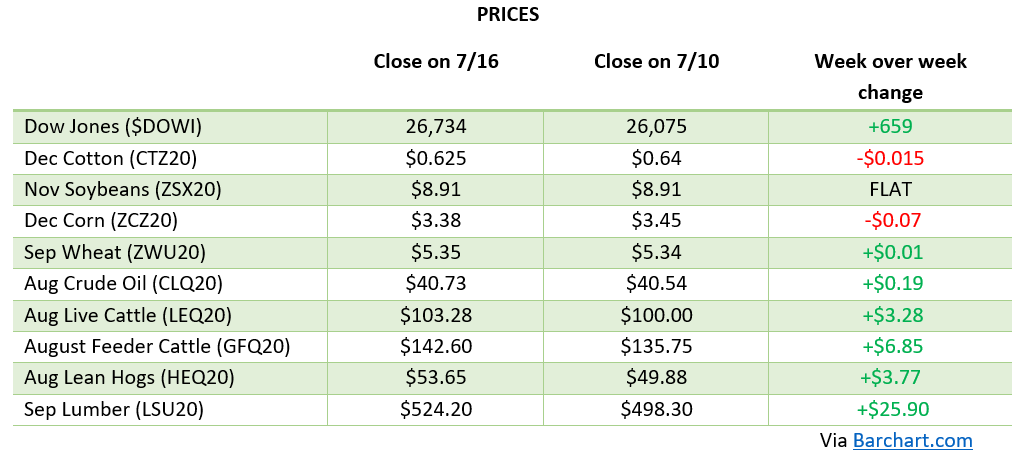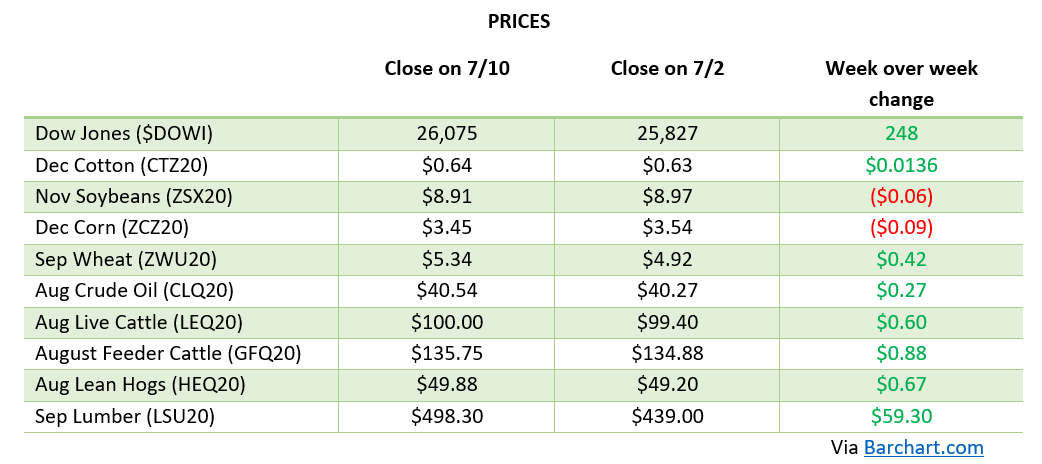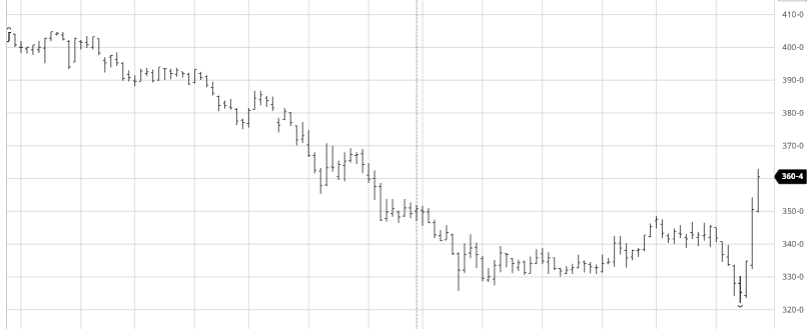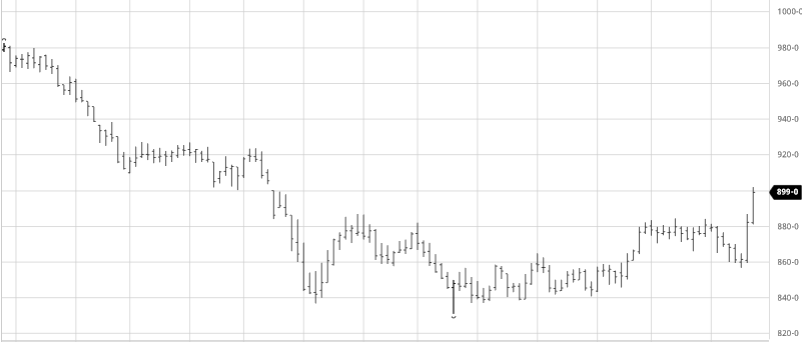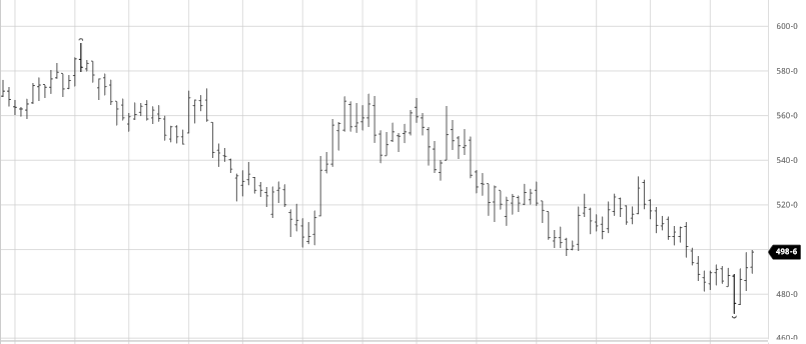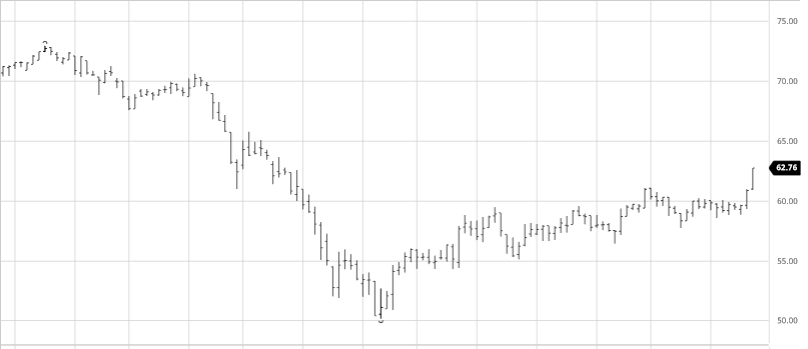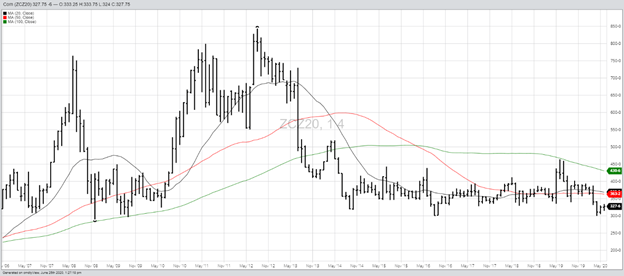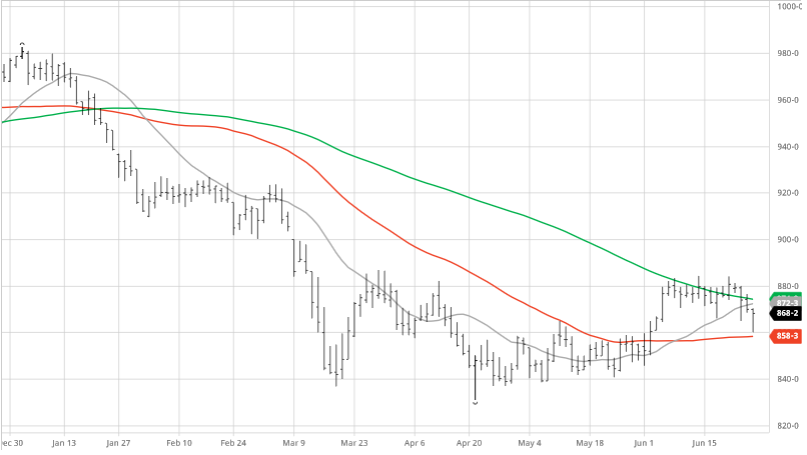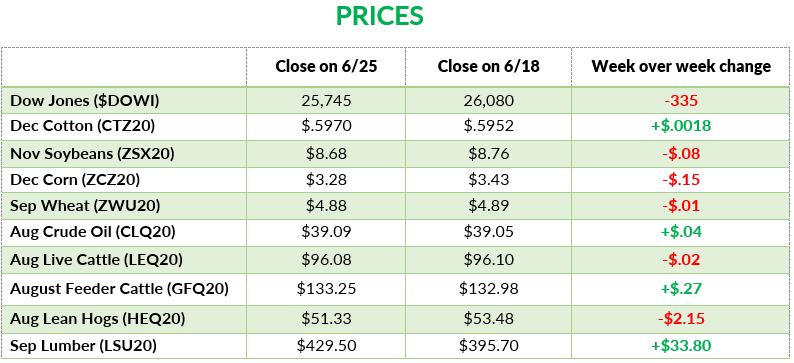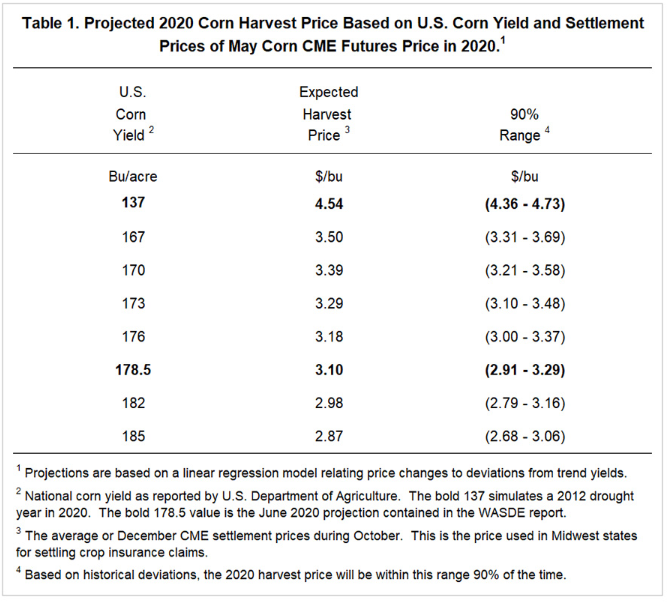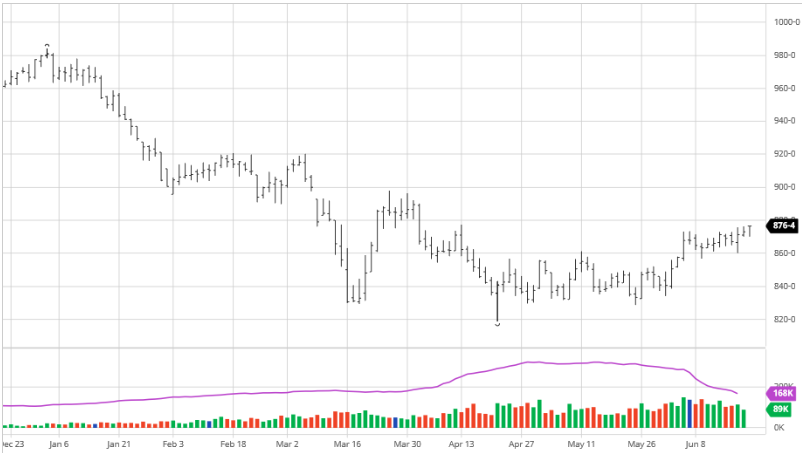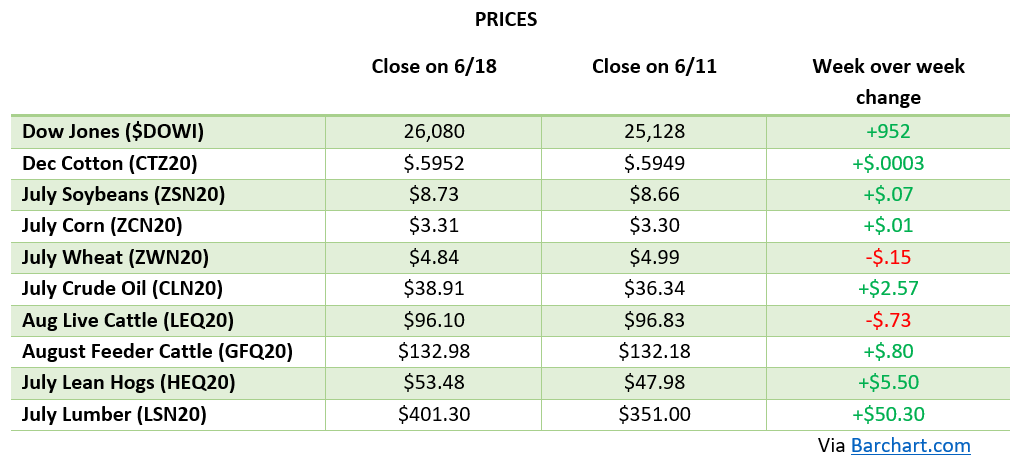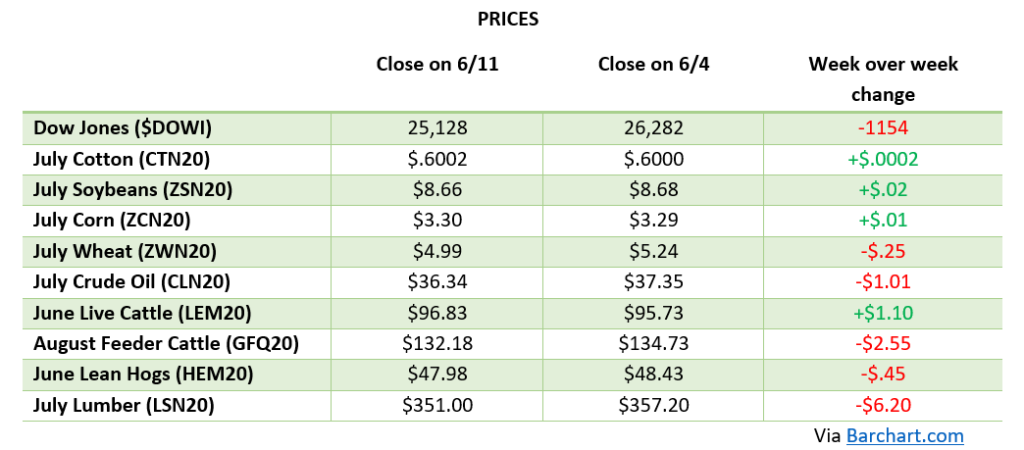CORN
Corn, along with other crops, got a big boost on Thursday this week. After a derecho ripped through Iowa and parts of Illinois damaging millions of acres and lots of grain storage bins the market seems to be trying to price in the damage. Despite a pretty bearish USDA report this week corn has bounced on the storm and the news from the FSA of an estimated 9 million prevent plant acres, 5.37 MA of corn. This week tested both contract lows and highs for the month as traders are trying to figure out how the derecho and PP numbers are going to effect final yields and supply. Along with assessing the damage there was wide ranging damage done to the crop and some people thought some areas could rebound and still be able to harvest which is holding a big question mark over the market right now. You can see the chart below shows the rebound this week after a few weeks of losses. The USDA report yesterday estimated a 181.8 BPA yield for this year which would have been bearish if not for the weather events this week. It is important to note this number did not include the damage from the storm which some are estimating could cut over 3 bushels per acre from final yield. As we continue to learn the exact damage from the storm to the top corn producing area of the country prices will move on news.
SOYBEANS
Soybeans, like corn, were affected by the derecho storm that ripped through the Midwest. Even though it is not grown as much as corn in those areas it still takes up a significant portion of their acres. In the USDA report this week they came out with an estimated 53.3 BPA yield and large ending stock numbers. Despite bearish report numbers beans have seen a solid gain this week as rumors of South America running out of beans to sell seems to be coming to fruition. Another indicator that SA has oversold their crop is that US soybeans are now competitive in the world cash market. China continues to buy large amounts of US soybeans as they head into the meeting this weekend to discuss progress on the Phase 1 Agreement. 1.22 million acres of soybeans were in the 9 million total acres of prevent plant helping this week as well. In the chart below you can see the $0.20+ bounce back to the $9.00 range from the end of last week and start of this week.
OTHER NEWS
Phase 1 Trade Agreement Meeting
The US and China are set to have their first check-in meeting to assess how Phase 1 is going (spoiler alert: not great). This is on top of recent tensions over the closing of embassies and spying allegations. Not sure that anything good can come out of these talks but they will be worth keeping an eye on August 15th. Hopefully, we see a commitment to ramp up and get a boost to start that week following.
Derecho
The storm that ripped through Iowa and parts of Illinois this week caused damage to an estimated 10 million acres and lots of grain storage bins at the farm level and elevator level. The satellite image below shows the extent of how many crops were knocked down/blown over. How much, if any, of these crops can stand back up remains to be seen, as lots of areas think it will be a total loss that will become silage or another use.






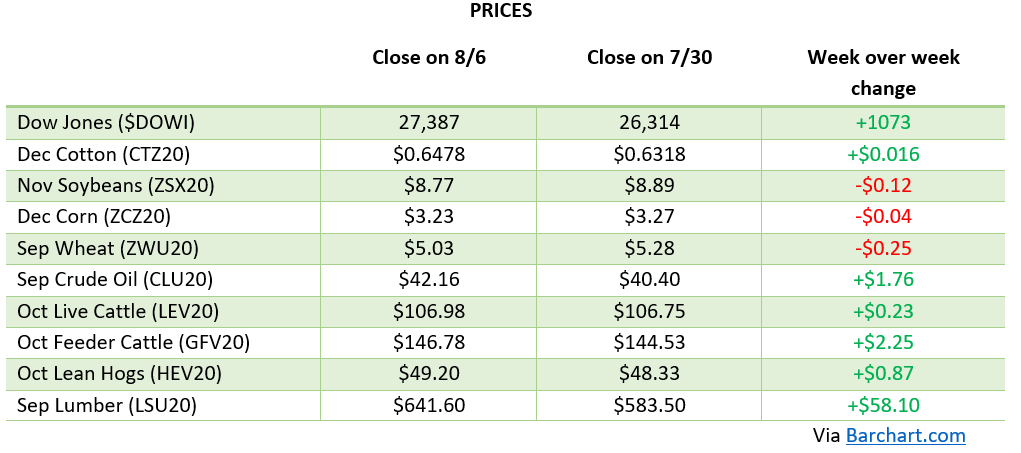
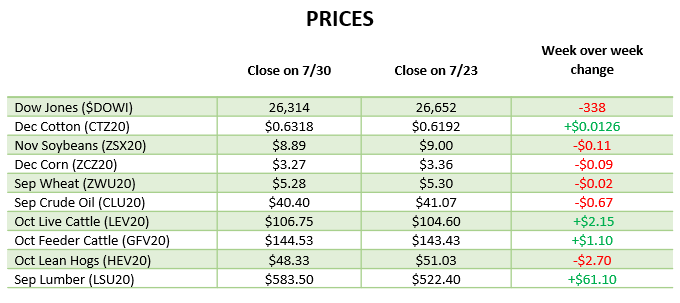
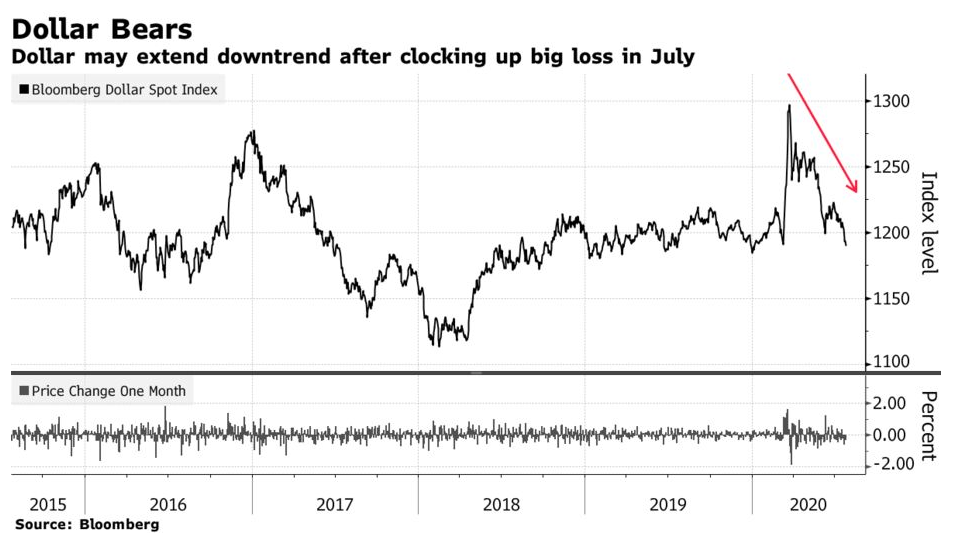
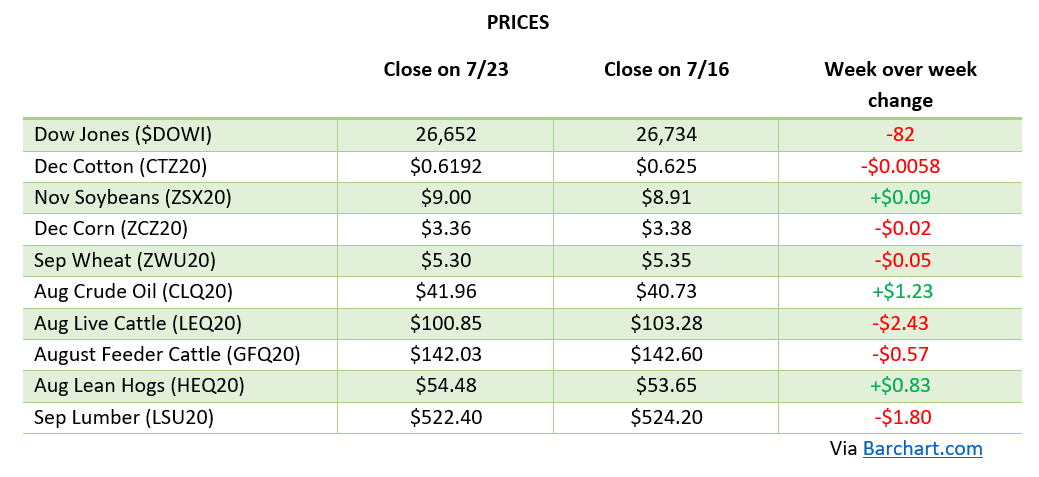
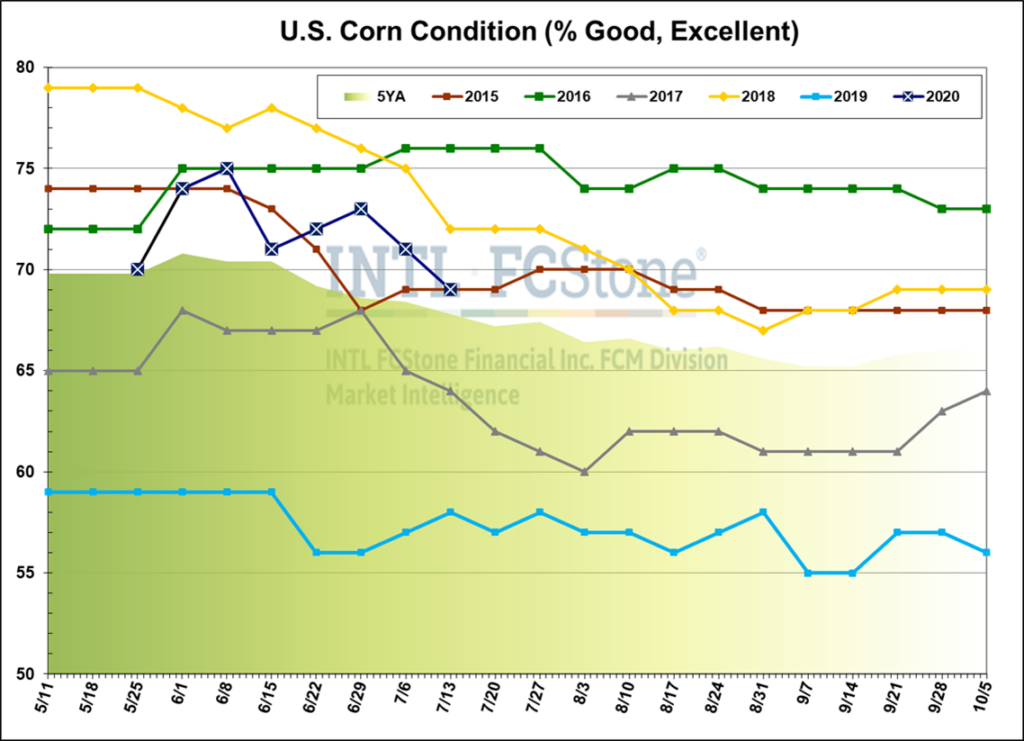
 Large purchases from China gave Wheat a big boost halfway into the week. Wheat did have to give a good chunk of that boost back the following day due to a lack of confirmation on purchases, but any Chinese purchases at this point are beneficial to the markets as other Wheat growing countries are seeing lower yield numbers. As you can see below, markets are well off the lows that we set a few weeks back as Wheat has made a solid rebound. Just like with Soybeans, more confirmed purchases, or any purchases for that matter, would be beneficial to U.S. Wheat.
Large purchases from China gave Wheat a big boost halfway into the week. Wheat did have to give a good chunk of that boost back the following day due to a lack of confirmation on purchases, but any Chinese purchases at this point are beneficial to the markets as other Wheat growing countries are seeing lower yield numbers. As you can see below, markets are well off the lows that we set a few weeks back as Wheat has made a solid rebound. Just like with Soybeans, more confirmed purchases, or any purchases for that matter, would be beneficial to U.S. Wheat.